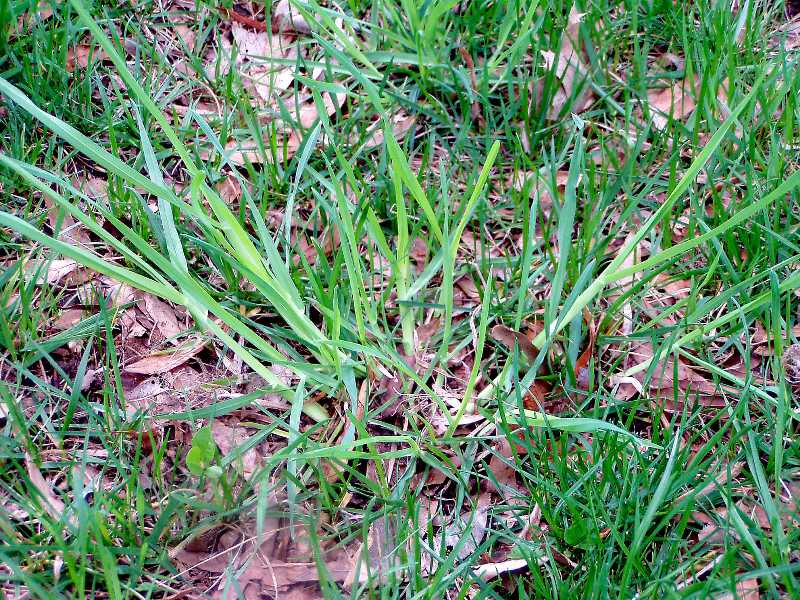 |
Orchard grass Dactylis glomerata in fescue lawn (Festuca) |
The principal perennial grassy weeds in lawns include Bermudagrass (Cynodon dactylon), nimblewill (Muhlenbergia schreberi), quackgrass (Elymus repens), wild fescue (Festuca pratensis), and in certain cases, zoysiagrass (Zoysia spp.). Each of these grasses, except wild fescue, is characterized by a vigorous, invasive growth habit under usual horticultural practices. They are especially troublesome in turf, because, unlike their common broadleaf counterparts, selective herbicides for their control are unknown.
Integrated Pest Management Strategies
1. Dig or pull plants. This method can be effective for controlling invading, perennial grassy weeds in beds and other non-lawn spaces. Constant vigilance is required because remaining root fragments and other plant parts will usually sprout, leading to renewed infestation. This technique cannot be recommended for use in turf except on a very limited basis. The usual practices of maintaining healthy, vigorous lawns comprised of cool-season grasses will not exclude invasion by nimblewill, Bermudagrass, or zoysiagrass from infested adjoining plots.
2. Use herbicides. Perennial grassy weeds can usually be controlled only by the application of non-selective, general purpose herbicides, e.g., glyphosate (Roundup, Kleenup) or glyfosinate. Small patches of these weeds in turf may be controlled by spot spraying. Of course, all vegetation will be killed, so the spotted turf must be repaired by proper soil preparation and overseeding with desirable species. Heavily infested, larger areas will probably require broadcast spraying of entire areas as a first step in lawn renovation. Whenever possible, this exercise should be carried out in late summer or early fall. Carefully directed sprays of non-selective herbicides have proven useful for controlling heavy infestation of perennial, grassy weeds in beds or other relatively open spaces. Desirable plants must be protected by adequate shielding to prevent contact with the herbicides during application. Although somewhat tedious, these materials may also be applied by carefully painting them on the weedy plants' surfaces.
3. Use all herbicides according to label instructions. Equipment must be cleaned and should not be used for applications other than herbicides.
(The following Weed ID pages linked to with permission of UMass Extension.)
Perennial Grasses
Organic Strategies
Strategy 1 is a strictly organic approach.
More images:
 |
| Path rush seed head (Juncus tenuis) growing in lawn |
|
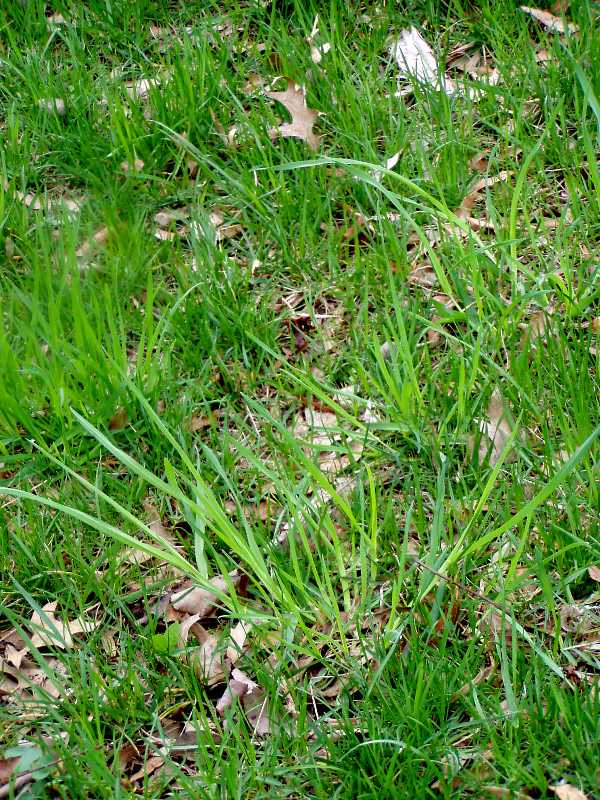 |
| Orchard grass Dactylis glomerata in fescue lawn (Festuca) |
|
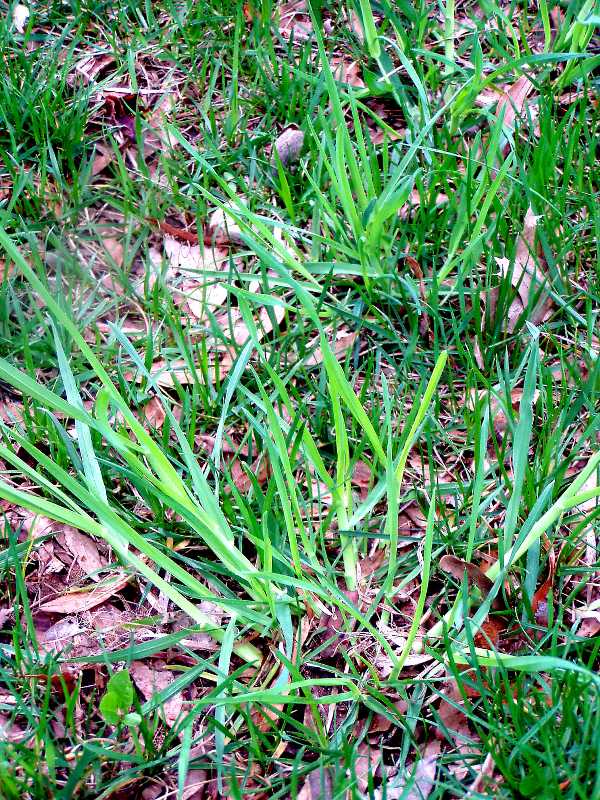 |
| Orchard grass Dactylis glomerata in fescue lawn (Festuca) |
|
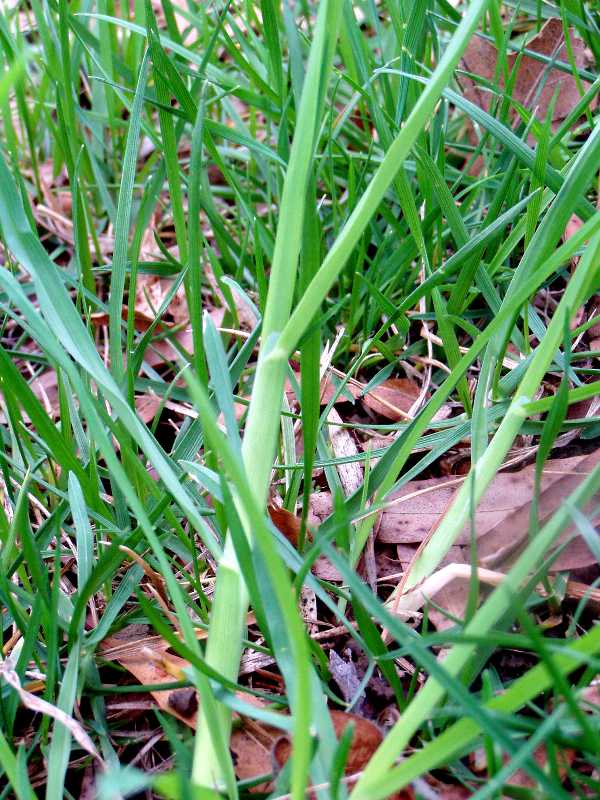 |
| Orchard grass Dactylis glomerata in fescue lawn (Festuca) |
|
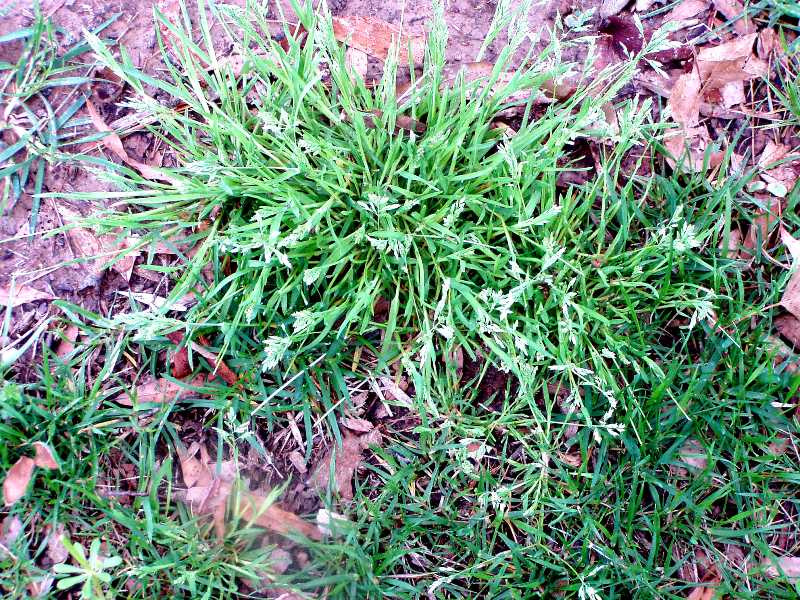 |
| Annual bluegrass or Poa anuua in fescue lawn (Festuca) |
|
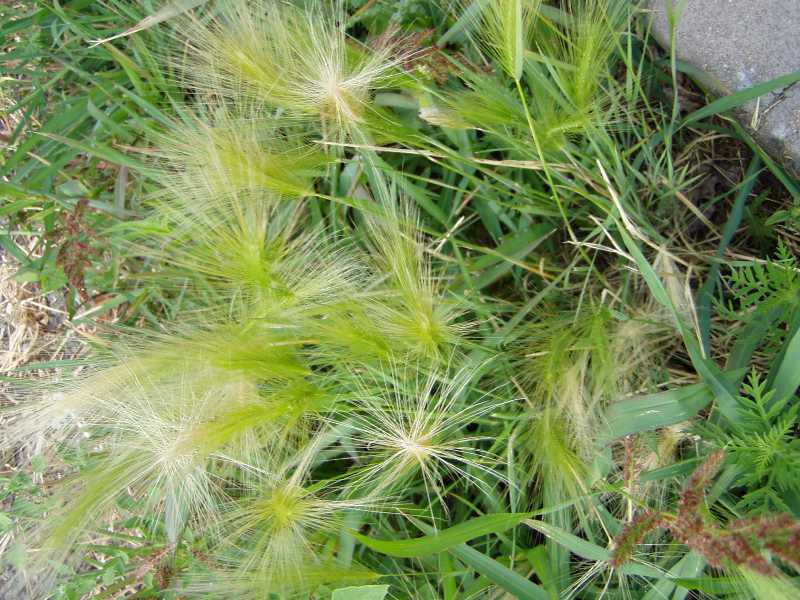 |
| Foxtail barley (Hordeum jubatum) |
|
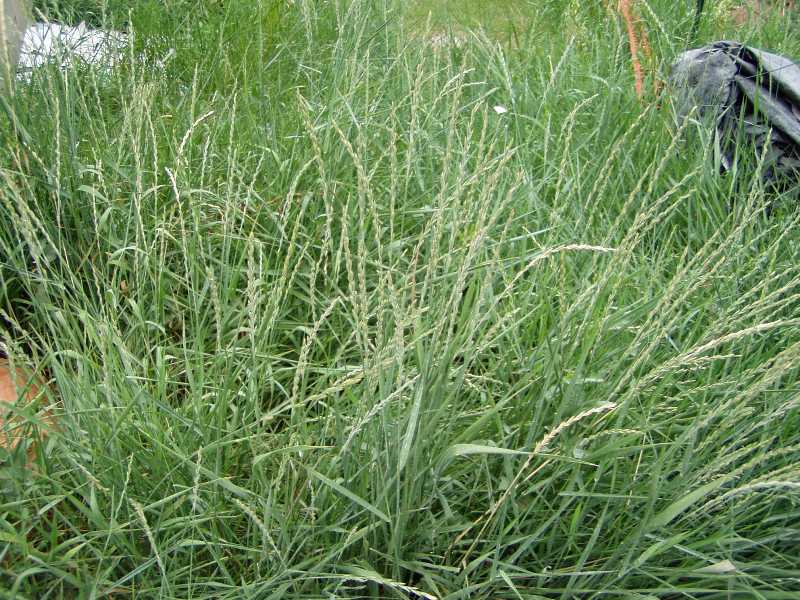 |
| Quackgrass or Agropyron repens is a pest of lawns and gardens |
|
 |
| Quackgrass or Agropyron repens is a pest of lawns and gardens |
|
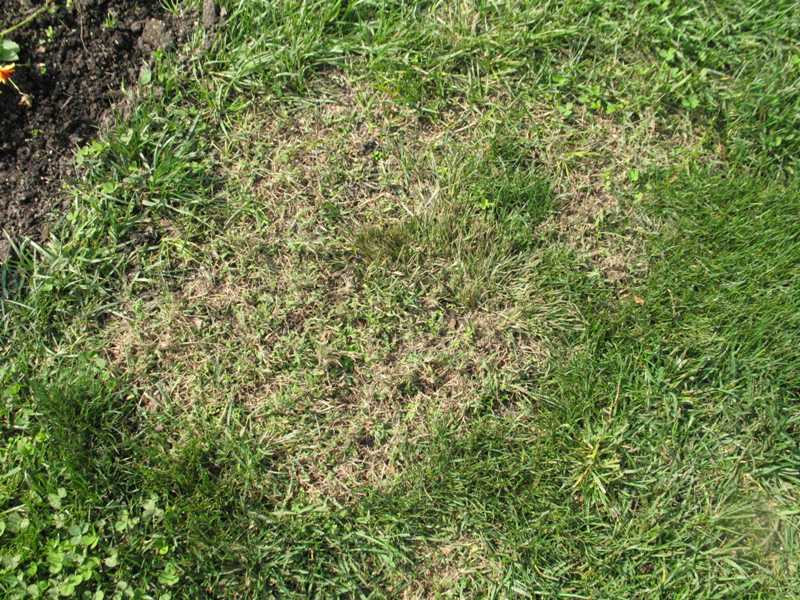 |
Zoysia in a fescue lawn (Festuca)
|
|
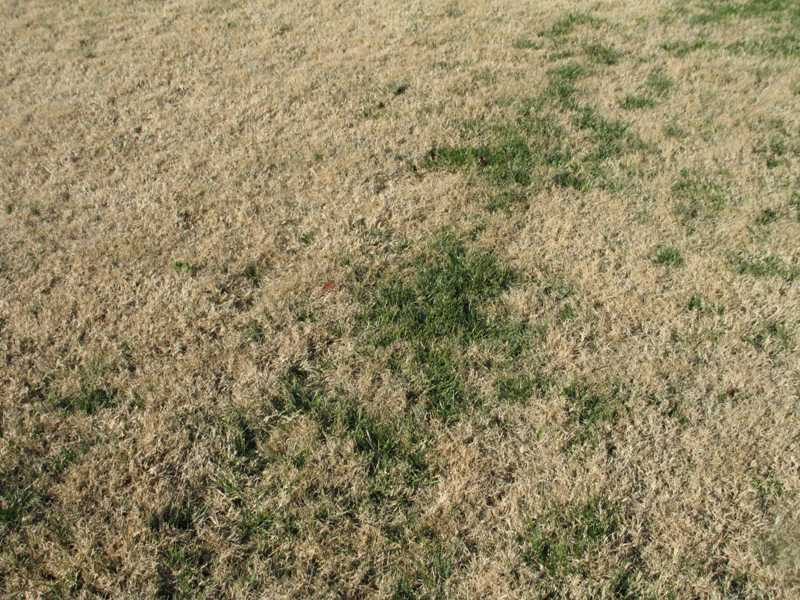 |
Cool-season grass, fescue (Festuca) invading a zoysia lawn
|
|
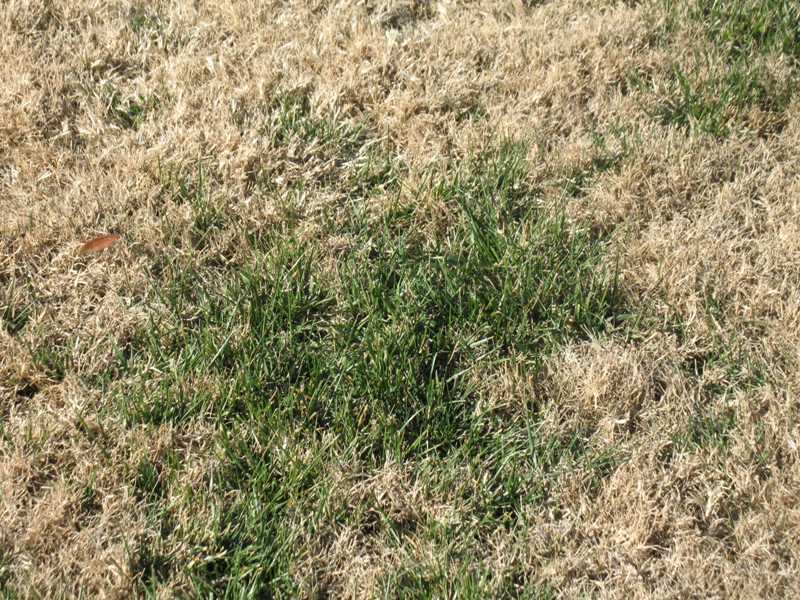 |
Cool-season grass, fescue (Festuca) invading a zoysia lawn
|
|
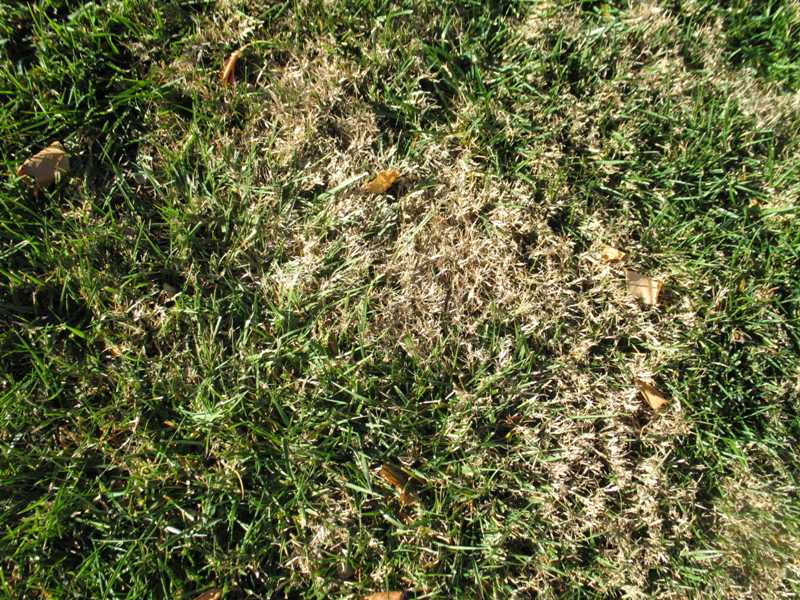 |
Dormant zoysia grass invading a fescue lawn (Festuca)
|
|